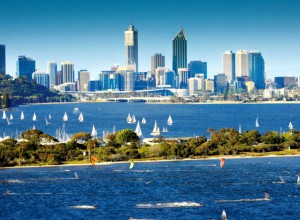What’s the outlook for the Western Australian property market?
It’s been in the doldrums for over 4 years now – is it finally going to turn the corner?
Recently QBE released its Australian Property Market Outlook – 2018-2021 and they suggest that a further 2% decline in the median house price is forecast over 2018/19, before modest price growth begins to re-emerge in 2019/20 and 2020/21.
Here’s a summary of QBE’s forecast based on BIS Oxford research:
Perth house market
The decline in house prices in Perth over the past four years began to slow in 2017/18 as the collapse in resource sector investment bottomed out, and signs of population growth recovery began to emerge.
 Perth’s median house price has fallen by a cumulative 12% since peaking in the June 2014 quarter.
Perth’s median house price has fallen by a cumulative 12% since peaking in the June 2014 quarter.
After the slump in mining investment, the unemployment rate in Perth peaked at 7.5% in March 2017.
However, by June 2018, the unemployment rate had improved to 5.7%, assisted by many transient mining industry workers returning to their country or state of origin.
Small improvements in both overseas and interstate migration occurred in 2017/18, flowing through to increasing population growth.
Still, the deterioration in population growth occurred just as new dwelling completions were increasing.
A significant surplus of stock emerged in 2016, and the market has remained oversupplied since then.
Rents in Perth are now 19% below the June 2014 peak.
This appears to be attracting tenants, with Perth’s vacancy rate of 5.6% in June 2018 being down from a peak of 7.3% 12 months earlier.
Although the outlook for the state economy has become more positive, the dwelling surplus in Perth looks set to remain in place for some time, and it appears that the market is beginning to retreat again.
After the decline in owner occupier lending flatted out in the six months to December 2017, there has been a 12% year-on-year decline in the first seven months of 2018.
A further 2% decline in the median house price is forecast over 2018/19, before modest price growth begins to re-emerge in 2019/20 and 2020/21.
By June 2021, the median house price is expected to reach $550,000 (5% higher than June 2018 levels).

Perth unit market
The transient nature of much of the mining sector workforce boosted demand in the unit market rather than the housing market during the mining investment boom.
As employment began to fall and many of these transient workers began to return home, tenant demand for units slumped more than for houses.
Together with weaker investor demand stemming from tightened credit conditions, Perth’s median unit price continued to fall by a further 5.4% in the year to June 2018.
During the mining investment boom, medium and high-density dwellings began to account for an increasing proportion of new dwellings being built.
Over the six years to 2018, the share of units accounted for 52% of new completions compared to an average of 32% in the six years prior.
This further suggests that the oversupply in Western Australia is likely to be larger in the unit market than in the housing market.
Outlook
The resultant slowing demand from investors will continue to be felt in the unit market.
Recent data for new unit dwelling commencements suggests that completions will continue to remain elevated for the next two years.
Consequently, median unit price growth is forecast to be more modest than for detached houses.
The median unit price is expected to decline further over 2018/19, before bottoming out and showing signs of improvement over the subsequent two years, taking the median house price to $405,000 by June 2021.
Western Australia regional mining centres
The median house price in Port Hedland reached a peak of $1.125 million at March 2013 reflecting a 155% increase from the start of the mining upturn in June 2007.

DCIM100MEDIADJI_0099.JPG
The subsequent downturn has seen the median house price fall by over 82% to bottom out at $206,000 in March 2018.
The unemployment rate has picked up only marginally, although this masks the transient nature of the employed population.
The median house price rose marginally to $210,000 in June quarter 2018, although this is not quite yet sufficient to suggest that the Port Hedland market has turned the corner.
Karratha in the Pilbara region saw price growth of 177% up to its peak of $873,000 at September 2010.
The downturn saw prices fall to $270,000 at the bottom of the market in September 2016.
Since then, there has been a small recovery in prices, with the June 2018 median price being $313,000.

Outlook
 In Port Hedland, sales volumes are significantly higher than when the median price peaked in March 2013, suggesting the market was tightly held.
In Port Hedland, sales volumes are significantly higher than when the median price peaked in March 2013, suggesting the market was tightly held.
However, although volumes are now higher, they have remained flat (along with prices), suggesting limited demand.
In Karratha, both volumes and prices have increased after the market bottomed out in September quarter 2016, indicating investors may be returning to this market.
Nevertheless, in the absence of any large new investment in these centres, prices are unlikely to get close to their previous peaks in the short to medium term.


No comments:
Post a Comment